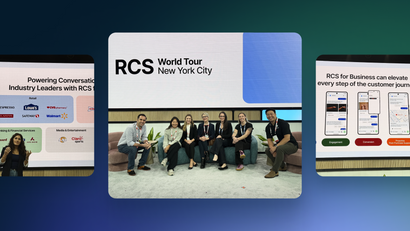As a B2C marketer, do you often find yourself at the intersection of data dependence and inconsistent campaigns? Does your role feel a bit like a (not so) merry-go-round of organizational silos and perpetual red tape?
These are the top eight pet peeves of B2C marketers to help you collect valuable insights into the areas where you feel most restricted.
Pet Peeve #1: “It’s Not in the Budget.”
Ah, the infamous phrase to kill the dreams of even the most creative marketer. The average marketing budget allocation for technology software platforms in the US sits at 11.8%. Between paid advertising channels, cutting-edge data analytics platforms, and assembling a talented team to execute with those tools, operating with nearly a tenth of your organization’s total budget isn’t exactly realistic.
Limited budgets often force marketers to make tough decisions about where to allocate resources, leading to an avalanche of paralyzing consequences:
- Endless compromises in strategy → Missed growth opportunities
- Inability to compete effectively → Loss of market share
- Stagnant engagement metrics → Difficulty scaling your user base
- Stifled creativity → Uninspired content and diminished brand perception
- Ineffective targeting and segmentation → Wasted resources and low conversion rates
- Difficulty measuring ROI → Ineffective decision-making
- Understaffed teams → Productivity loss and employee burnout
Pet Peeve #2: “We’ll Know as Soon as We Hear From Engineering…”
Meeting your customers where they are most likely to engage in their user journey requires creativity and technical execution. Let’s assume you have the former locked down, as any good marketing team should! However, the latter depends on the availability and accessibility of your engineering team.
Your engineering and development teams are most likely bogged down with their own competing priorities and have limited availability to support your initiatives. And all of this isn’t even considering the expertise and terminology gap between marketing and technical teams which are one-way tickets to frequent misunderstandings and misaligned expectations.
For example, gathering and analyzing data from your mobile app to inform mobile messaging decisions relies on the availability of robust analytics capabilities. If your marketing department depends on engineering teams to implement analytics tools and tracking mechanisms within your app, it creates a domino effect of problems:
- Delays or technical challenges that impede access to timely insights
- Difficulty in accessing and interpreting data
- Delays in launching targeted campaigns and dynamic content variations (such as custom mobile onboarding sequences or cross-channel re-engagement campaigns)
- An over-reliance on third-party tools or platforms for data collection
- Stagnant retention rates and MAU (monthly active users) while internal sort out an informational bottleneck
Pet Peeve #3: “We’re Stuck With the Same Cookie-Cutter Campaigns and Generic Messaging.”
B2C marketers need to know their users by much more than a first-name basis. However, between manpower limitations, budget constraints, and disconnected data analytics tools, personalizing your messaging and sustaining growth becomes more of a pipedream than a plan.
Implementing dynamic content personalization involves tailoring marketing messages and experiences based on individual user preferences, behaviors, and interactions. This may include dynamically adjusting website content, email campaigns, or in-app messaging with hyper-relevant data tags and segmentation strategies to deliver messaging that resonates with each customer.
Without sufficient marketing automation tools, you cannot expect to deliver targeted messages to millions or even thousands of customers simultaneously, all while maintaining brand consistency and delivering a seamless customer experience.
Pet Peeve #4: “Communication is Hopelessly Lost Due to Organizational Siloing.”
Internal bureaucracy has become somewhat of a necessary evil when organizations reach a certain size. Although expected, dense approval processes and interdepartmental silos create barriers to collaboration and decision-making if left unchecked.
Your marketing team may have innovative ideas for mobile engagement campaigns or app enhancements to improve the user experience, but implementing these ideas requires collaboration with other teams to develop and deploy the necessary features. If each department operates in silos with its own goals, priorities, and decision-making processes, getting alignment and buy-in from all stakeholders can be challenging.
As a result, initiatives get bogged down under layers and layers of review, miscommunications, and competing agendas, leaving some of the most critical decisions delayed or in implementation purgatory.
Pet Peeve #5: “We’re Flying in the Blind When it Comes to Data & Benchmarks!”
Without access to comprehensive and accurate data, marketers may struggle to understand user behaviors, preferences, and interactions across various channels, leading to misguided targeting efforts and irrelevant messaging. Additionally, foggy visibility into key performance metrics can hinder your team's ability to measure the impact of campaign initiatives, identify areas for improvement, and effectively allocate resources.
Certain key metrics provide valuable insights into campaign performance, user engagement, and overall effectiveness. As a B2C marketer, you should have full transparency into all of them.
Some examples include:
- App Installs: The number of downloads or installations of a mobile app, indicating the reach and success of acquisition efforts.
- User Retention Rate: The percentage of users who continue to use the app over a specific period, indicating the app's ability to retain users and sustain engagement.
- App Engagement Metrics: Metrics such as daily active users (DAU), monthly active users (MAU), session duration, and screen views provide insights into how users interact with the app and the level of engagement it generates.
- Conversion Rate: The percentage of users who complete a desired action or conversion goal, such as making a purchase, signing up for a newsletter, or completing a form, indicating the effectiveness of the campaign in driving desired outcomes.
- User Lifetime Value (LTV): The predicted net profit attributed to the entire future relationship with a customer over their lifetime with a business
- Click-Through Rate (CTR): The percentage of users who click on a link or ad, indicating the level of interest and engagement generated by the campaign's creative assets and messaging.
Going a step further, easy access to industry benchmarks provide essential context and insights necessary for informed decision-making. By comparing your own performance metrics against industry standards, you can accurately gauge their effectiveness, identify areas for improvement, and set realistic goals. These benchmarks serve as valuable reference points, and without them B2C marketers can never understand where they stand relative to competitors and industry trends, not to mention justifying budget allocations to stakeholders!
Pet Peeve #6: “Our Messaging is NOT Consistent.”
Between mobile messaging channels like push or SMS and longer-form marketing efforts across websites or within email campaigns, there are no shortage of difficulties when striving to maintain a conistent brand voice. Add an external agency into the mix and you have a recipe for mixed messaging.
A disjointed brand voice not only confuses consumers but also dilutes your brand's identity, making it harder for your customers to establish a strong and cohesive connection with your product or services. As a result, many B2C marketers find themselves grappling with the repercussions of weakened brand recognition, diminished trust, and faltering customer loyalty.
Pet Peeve #7: “My Avenues of Creativity are Perpetually Roadblocked!”
There is no greater barrier to creativity and professional growth than a lack of autonomy. Marketers, by nature, thrive on the ability to innovate, experiment, and explore new avenues for engaging with their audience. However, when faced with micromanagement or excessive restrictions, many find themselves constrained in their ability to tap their true creative potential.
The feeling of being constantly scrutinized or second-guessed erodes confidence and motivation, leading to a stifled work environment where risk-taking and bold ideas are discouraged. Without the freedom to test new strategies, tactics, or messaging approaches, B2C marketers are confined to repetitive, formulaic campaigns that fail to capture the attention of their users (who are becoming increasingly discerning of impersonal, generic marketing.)
Pet Peeve #8: “I Have No Where to Turn For Unified Engagement Tools.”
Whether you’re a marketer tired of being overly dependent on other teams or you’re merely looking for fast time to value with an affordable no-code mobile engagement solution, OneSignal’s robust suite of omnichannel messaging tools was built to offer solutions for every frustrated marketer:
- Automated campaign functions, and built-in templates ensure you spend less time bugging your engineers and more time engaging your users.
- A messaging automation tool purpose built to automate various aspects of the customer journey.
- A customer engagement platform that is accessible to all stakeholders, helping improve visibility, data sharing, and collaboration.
- Data analytics tools allowing for quick, actionable insights into your campaigns and painless integrations with your existing data tools.
- A robust free plan to help you make a more informed decision…




